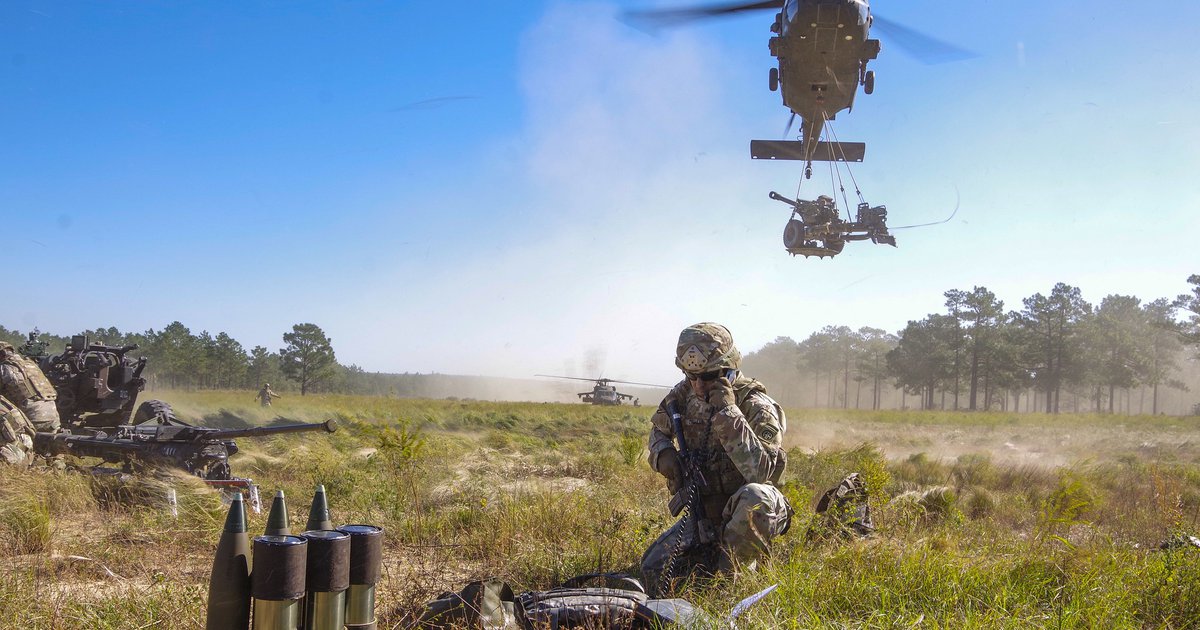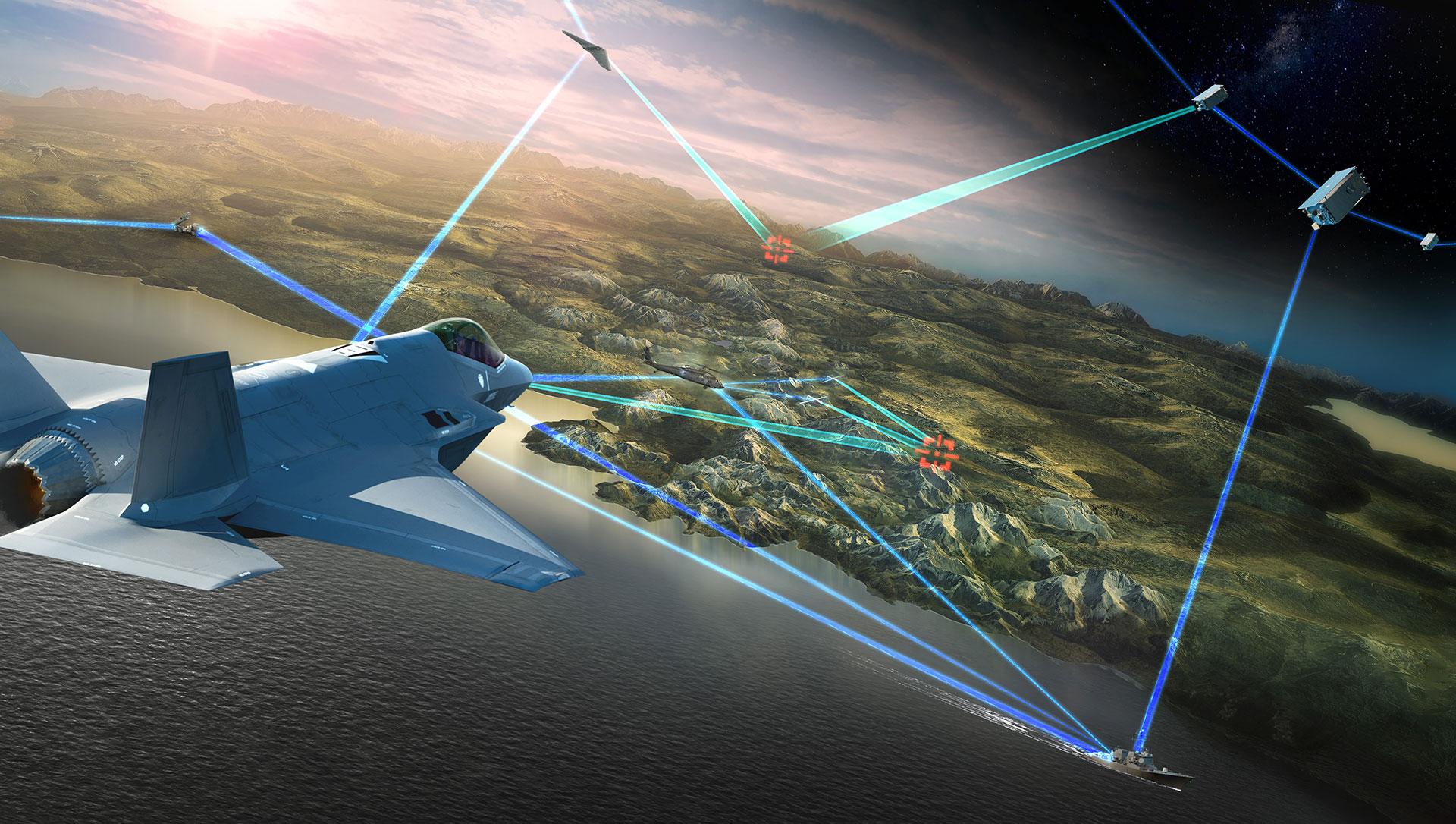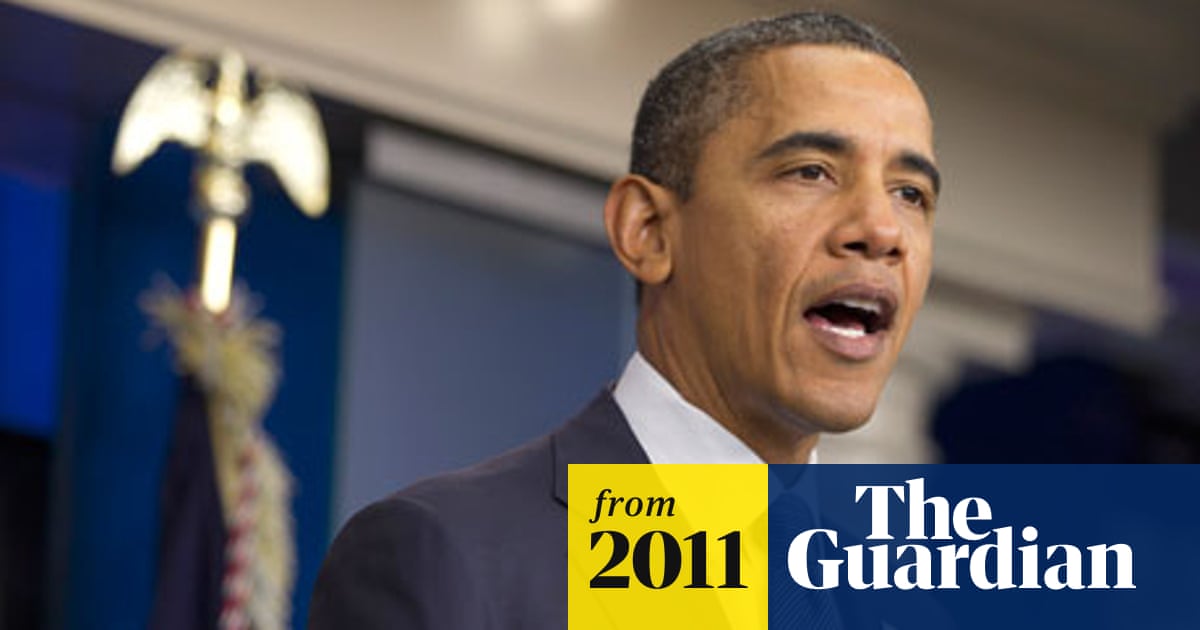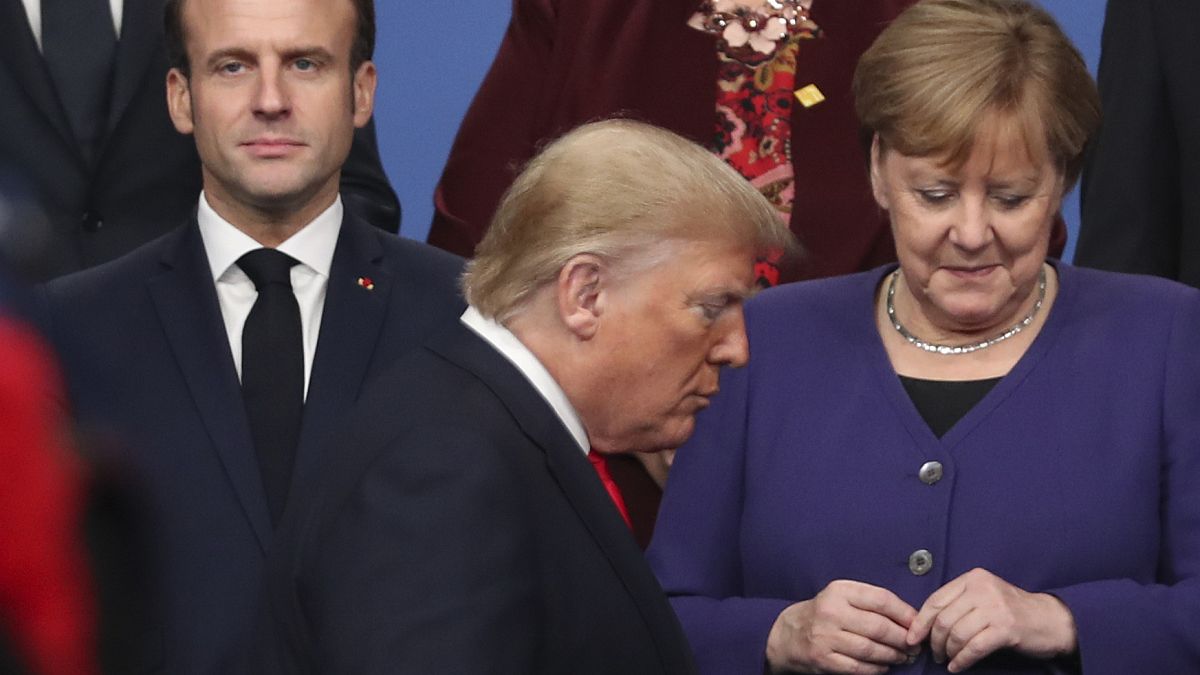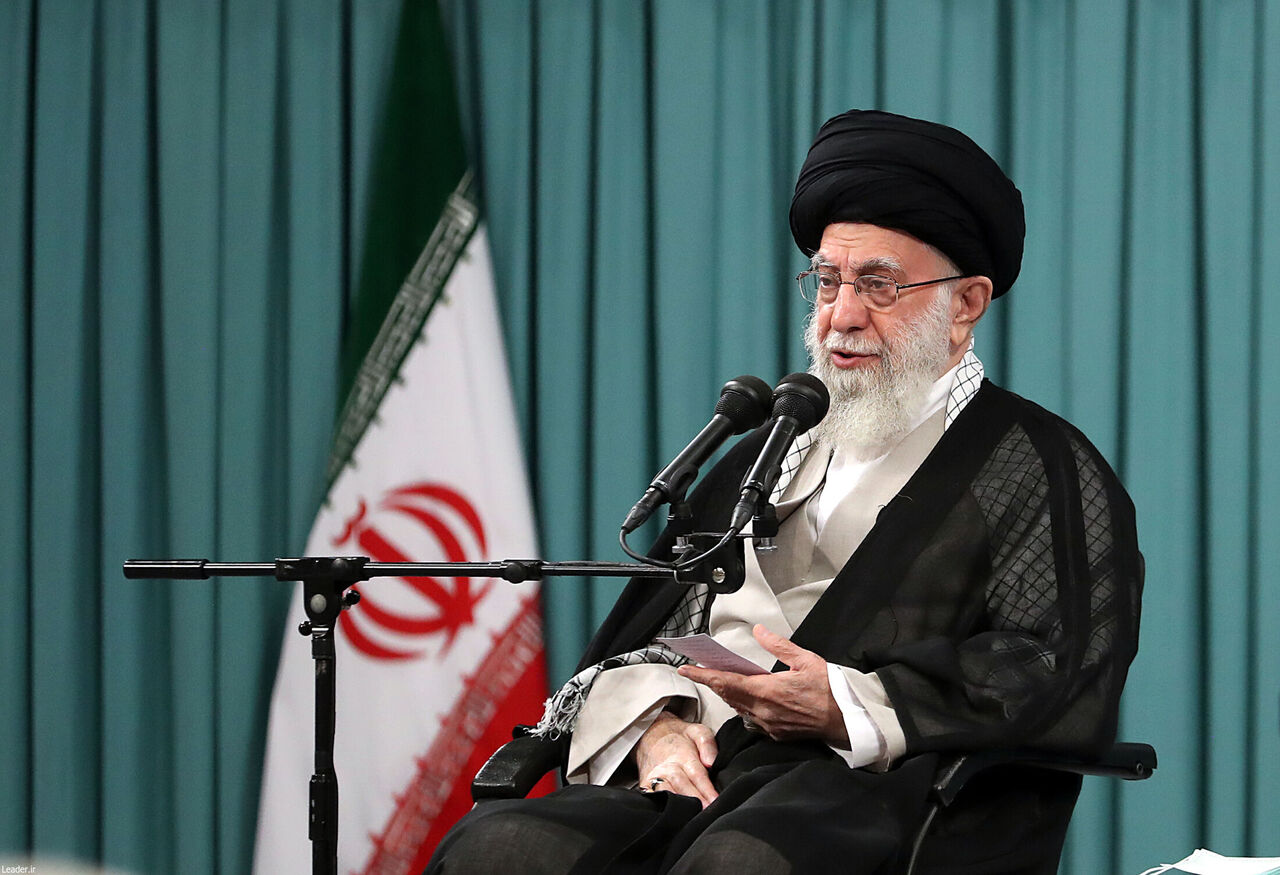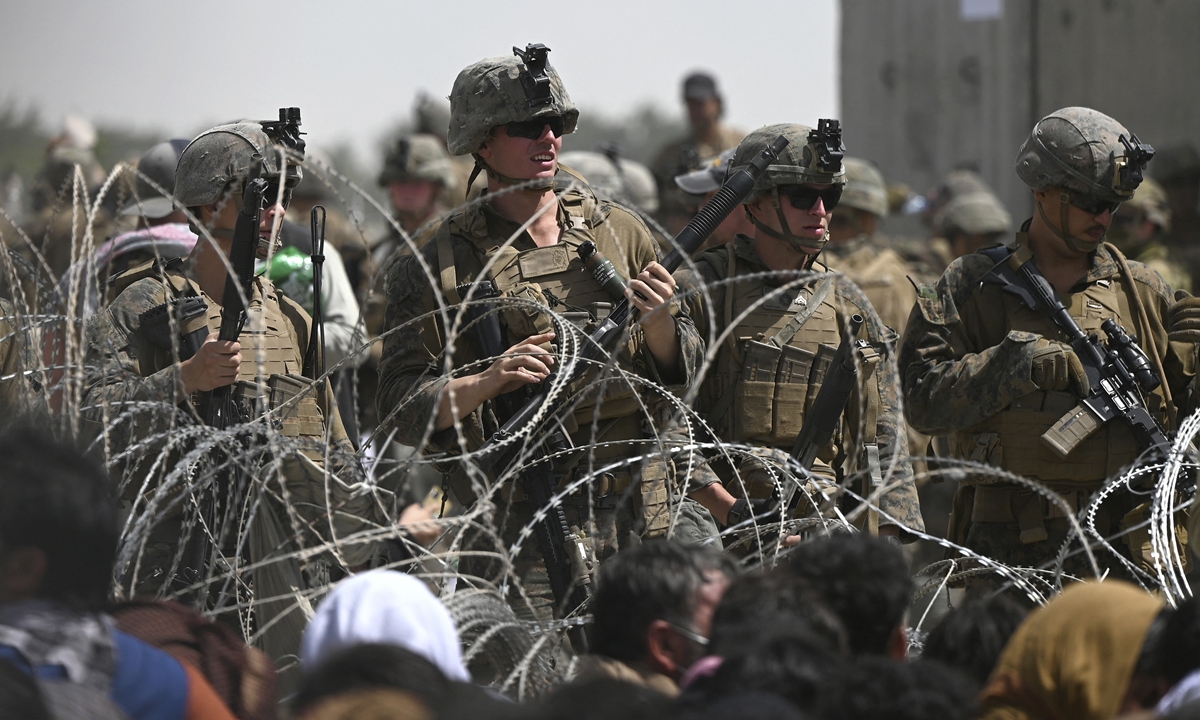Red Team: How to Succeed By Thinking Like the Enemy - read this book. This principle was adopted in MC02 to check the impact of certain technologies and tactics. MC02 featured a total of two combat scenarios - each representing a different deployment tactic to see how it can shape the course of battle and outcome. US Navy failed in combat scenario 1 due to questionable deployment tactic in the Gulf of Oman and other restricted rules of engagement - this was
intentional to see what happens (i.e., setting yourself up for failure can be instructive). Shift from combat scenario 1 to combat scenario 2 was assumed to be changing the rules of the simulation, which is misleading and false.
There is an article adapted from that book, which answers the question.
https://warontherocks.com/2015/11/m...a-corrupted-military-exercise-and-its-legacy/
In it, we read:
It pitted the U.S. military (with capabilities projected five years into the future) against a nameless potential adversary, with outcome intended to inform future strategy and procurement decisions. Controversy immediately arose when the opposition force, or red team, learned that the results were scripted to assure that the U.S. forces would win.
As the exercise progressed, the OPFOR free-play was eventually constrained to the point where the end state was scripted. This scripting ensured a blue team operational victory and established conditions in the exercise for transition operations.
In other terms, if the team representing American forces came out on top it was because the outcome had been scripted in advance.
The Red Team in MC02 is shown to be highly motivated, competent, and skilled in conduct of war - are you sure that Iranian forces live up to the MC02 simulation standard in view of incidents such as
How an F-22 pilot scared Iranian fighters away with just one sentence,
USA regime claim, not corroborated. Also doesn't prove lack of Iranian motivation, competence and skill in conduct of war.
Propaganda based on fake news.
As opposed to the US Navy admiral who ordered the downing of an Iranian passenger plane - for that person ended up being decorated instead.
https://www.washingtonpost.com/arch...-medals/cf383f02-05ce-435b-9086-5d61de569ed8/
https://www.nytimes.com/2020/01/08/opinion/us-iran-soleimani.html
Even the RQ-170 incident is a one-off due to complacency of its operators after 3 years of conducting ISR missions deep inside Iran; somebody thought that it was a good idea to dispatch a drone for ISR in broad daylight deep inside Iran.
Again a unilateral face-saving claim by the USA military with no evidence offered to substantiate it.
F-22 and F-35 are entirely different beasts, nevertheless.
MC02 was aimed to test battle tactics and spur USN to make its ships more capable and survivable than ever before:
This is the point.
MC02 has served its purpose.
| 2001 | 2018 |
| AEGIS Baseline 6 | AEGIS Baseline 9 |
Munition
SM-2ER = 8
SM-2MR = 46
ESSM = 8
TLAM = 32
VLA = 8
| Munition
SM-3 = 8
SM-6 = 16
SM-2MR = 30
ESSM = 16
TLAM = 32
VLA = 6
|
Latest developments:
- SM-2 munition is entirely replaced with SM-6 munition and SM-3 munition loadout is increased.
- TLAM improvements ongoing
- AEGIS Baseline 10 is emerging
The SM-6 missile is three missiles in one. It's the only weapon that can perform anti-air warfare, ballistic missile defense and anti-surface warfare missions. SM-6 munition is designed to intercept virtually any type of airborne threat including long range ASBM. Case in point =
FTM-31 E1a live fire test. Evidence in action.
The SM-6 SAM, associated radars and supporting systems have been taken into account by Iran.
Here:
Iran’s ballistic missiles constitute a primary component of its strategic deterrent. Lacking a modern air force, Iran has embraced ballistic missiles as a long-range strike capability to dissuade its adversaries in the region—particularly the United States, Israel, and Saudi Arabia—from attacking Iran. Iran has the largest missile force in the Middle East, with a substantial inventory of close-range ballistic missiles (CRBMs), short-range ballistic missiles (SRBMs), and medium-range ballistic missiles (MRBMs) that can strike targets throughout the region as far as 2,000 kilometers from Iran’s borders. Iran is also developing land-attack cruise missiles (LACMs), which present a unique threat profile from ballistic missiles because they can fly at low altitude and attack a target from multiple directions.
Decades of international sanctions have hampered Iran’s ability to modernize its military forces through foreign procurement, but Tehran has invested heavily in its domestic infrastructure, equipment, and expertise to develop and produce increasingly capable ballistic and cruise missiles. Iran will continue to improve the accuracy and lethality of some of those systems and will pursue the development of new systems, despite continued international counterproliferation efforts and restrictions under UNSCR 2231. Iran is also extending the range of some of its SRBMs to be able to strike targets farther away, filling a capability gap between its MRBMs and older SRBMs. [For more details on UNSCR 2231, see Appendix J.]
Iran can launch salvos of missiles against large-area targets, such as military bases and population centers, throughout the region to inflict damage, complicate adversary military operations, and weaken enemy morale. Although it maintains many older, inaccurate missiles in its inventory, Iran is increasing the accuracy of many of its missile systems. The use of improved guidance technology and maneuverability during the terminal phase of flight enables these missiles to be used more effectively against smaller targets, including specific military facilities and ships at sea. These enhancements could reduce the miss-distance of some Iranian missiles to as little as tens of meters, potentially requiring fewer missiles to damage or destroy an intended target and broadening Iran’s options for missile use. Iran’s more-accurate systems are primarily short range, such as the Fateh-110 SRBM and its derivatives. Iran’s longer-range systems, such as the Shahab 3 MRBM, are generally less accurate. However, Iran is developing MRBMs with greater precision, such as the Emad-1, that improve Iran’s ability to strike distant targets more effectively. Iran could also complicate regional missile defenses by launching large missile salvos.
This information is taken from an American Defense Intelligence Agency (DIA) report that was published in
2019 -
before Iranian attack on Ayn al-Assad Airbase in Iraq.
The Defense Intelligence Agency (DIA) today released “Iran Military Power,” an intelligence product that examines the core capabilities of Iran's military.
www.dia.mil
1. American intelligence community is expected to have a better understanding of these developments in comparison to individuals commenting on American mainstream media of-course.
2. Iranian attack on Ayn al-Assad Airbase in Iraq provides a more concrete evidence of the Iranian claims about accuracy of its Ballistic Missile (BM) technology of-course. Evidence in action. This is how it is.
The question however was not how a specialized institution would assess Iranian missile power, but rather what Washington's PR strategy for broader audiences looks like.
And here, we had an administration official, the aforementioned Brian Hook clearly attempting to downplay the capability of Iranian missiles the very same year as the DIA report was published.
https://sputnikglobe.com/20190608/brian-hook-iran-deception-1075734330.html
Thence, the USA has not been hyping the strength of Iranian military forces.
My statement is in view of the article that you posted in this thread, the author Scott Ritter has grossly overestimated Iranian capability and grossly underestimated American capability to fight a war in typical American fashion to overhype a particular enemy. The intent might be to push American MIC to do a better job, or Scott Ritter is bitter due to
his questionable past.
Given that Ritter is a dissident ex-officer who fell out with the USA establishment, this by definition is not a case of the USA regime overstating an adversary's power.
As for his explanations, they seem realistic to me.
US forces have a rich history of confronting strong adversaries and prevailing in some of the toughest battles to be fought in human history and also in battles where US forces were less capable on paper.
The Battle of Midway - 1942
The Battle of El Guettar - 1942
Operation Overlord - 1944
The Battle of Iwo Jima - 1945
The Battle of
Chosin Reservoir - 1950
The Battle of Hue City - 1968
Operation Apache Snow - 1969
The Battle of Fallujah (
First and
Second) - 2004
These achievements are not possible with decision makers like Scott Ritter. Human spirit is a thing.
The USA was defeated in various battles and wars as well.
I see.
Still, nobody sane would want to escalate exchanges with the US to the point of no return.
Iranian retaliation didn't go beyond the missile strike because the martyrdom of a general, be it a legendary one like shahid Soleimani, wouldn't suffice to generate a strategic setback to Iran's regional position. Had the USA taken a measure that actually threatened Iran's position in a serious way, then Iranian retaliation would have been expected to be heavier, in accordance with and proportional to the hypothetical reversal suffered.
Sun Tzu: Appear weak when you are strong...
...if Ritter was speaking on behalf of the USA regime. He is not, in fact the opposite holds true.
Colossal target list (many times that of so-called "Desert Storm")? Do you have statistics?
Iraq had created a massive air defense force by 1990:
Credited to RAND
This was one of the strongest aspects of Iraqi military capability in 1991, this force brought down a total of
60 Coalition jet fighters in the war while none were lost in aerial clashes above Iraq. Impressive, if you ask me.
Air defences weren't the only types of sites bombed by the USA and allies. In fact Iraq's infrastructure in the broad sense was intensely struck, including non-military sites.
In both areas of military and civilian infrastructure Iran is more developed than Iraq used to be, and operates several times the amount of facilities and equipment.
At this stage quantity comes into play and in a country the size of Iran, with the level of industrial and human development attained by Iran, the number of relevant targets in an full blown conflict will be impressive for the USA.
Numbers are but a part of the game, you do
NOT have to match and fight opposing forces on bullet per bullet basis. You need to understand the system and cripple it.
Credited to RAND
View attachment 954297
Credited to RAND
US focused on HOW TO
prevent Iraqi military from fighting like a cohesive fighting force in war. US came up with excellent combination of
strategy, tactics, and
technologies to destroy Iraqi armed forces and liberate Kuwait,
in a matter of days. This war was fought with the intent to win and not to appease American MIC. American leadership of the time was fully committed to the cause.
In addition to creating a massive air defense force, Iraq had created 20 Airbases, hundreds of hardened shelters, and numerous bunkers housing sensitive equipment. This infrastructure was bombed repeatedly to the extent that Iraqi Air Force lost 141 aircraft on the ground and scores of Iraqi pilots thought that it was better find refuge in Iran (138 aircraft fled to Iran).
Iraqi C2 military bunker complex at Al Taji Air Base was encased in reinforced concrete and buried 100 feet deep. This complex withstood numerous attacks during the war but US came up with a solution:
For days, U.S. warplanes had pounded the Iraqi military bunker complex at Al Taji Air Base north of Baghdad without success. Even huge 2,000-pound bombs designed to slice through six-foot-thick bunker walls could not breach the command lair, encased in concrete and buried 100 feet deep.
On the evening of Feb. 27, four days into the ground offensive against Iraq, a U.S. Air Force F-111F fighter-bomber streaked north across the Saudi desert on a course for Al Taji. A long, cylinder-like device fell from the plane and, guided by a laser, hurtled toward the bunkers.
A small puff of smoke suddenly shot from an entrance to Taji Bunker No. 1. About seven seconds later, a huge explosion ripped through the command post, reducing the bunker to a jumble of broken steel and concrete, according to Air Force officials.
The mission marked the spectacular battlefield debut of the GBU-28, a bunker-killing bomb developed and rushed into combat with unprecedented speed by the Air Force, Texas Instruments Inc. and Lockheed Missiles and Space Co. during the Persian Gulf War.
https://www.washingtonpost.com/arch...ulf-war/246c123d-8833-465b-a848-4bd046060c83/
From the quoted RAND report:
Iraq's IADS was completely dependent on centralized control. Once that control was eliminated, Iraqi defences were forced to conduct autonomous operations in a heavily degraded mode.
The exact opposite to Iran's approach, which stresses autonomy of AD units. Among other things Iran developed and mass produced sophisticated 'all in one' mobile SAM systems such as the Third Khordad, which brought down the USA's latest generation RQ-4A Global Hawk BAMS-D surveillance drone over the Persian Gulf in 2019.
https://english.iswnews.com/27840/military-knowledge-sevom-khordad-air-defense-system/
Indeed Iran has been studying past wars waged by the Americans in minute detail, and drawn the right conclusions.
It is true that Russia, US, and Israel had distinct objectives and established a hotline to avoid clashes in Syria:
US = Operation Inherent Resolve = to counter ISIL movement in Syria = since 2014
Russia = Support Assad regime = to counter Syrian rebels = since 2015
Israel = Target Iranian supplies to Hezbollah and Assad regime = to counter Iran in Syria = since 2017
But Russia was not taking its chances. Russian RED LINE was not to attack Assad regime and its forces, and deployed an S-400 system to show its intent.
There were situations in which US felt the need to attack infrastructure of Assad regime. But Israel was more likely to engage Assad regime due to its focus on attacking Iranian supplies to Hezbollah and Assad regime. But there were situations in which US felt the need to attack infrastructure of Assad regime, and Israel was more likely to engage Assad regime due to its focus on attacking Iranian supplies to Hezbollah and Assad regime. Both US and Israel came up a strategy to neuter Russian S-300 and S-400 systems with advanced applications of Electronic Warfare (EW) and stealth without resorting to destroy them while attacking infrastructure of Assad regime.
Russia has had a tacit understanding with the zionists and the USA to tolerate their attacks on Syrian forces - as long as these attacks would stop short of threatening the stability of the Syrian government and give armed opposition groups the upperhand. So long as this condition is respected, it makes no sense for Moscow to escalate.
S-300 and S-400 systems are getting wrecked in Ukraine in fact; Ukrainian forces are not hesitant to engage and destroy virtually any Russian military asset within reach. Ukraine has also lost a number of its S-300 systems to Russian forces in the war.
Ukraine has destroyed more than five batteries of Almaz-Antey manufactured S-400 surface-to-air missiles in Donetsk Oblast, Kherson Oblast, Tokmak and Crimean peninsula using cheap kamikaze drones …

www.globaldefensecorp.com
So much for the
"in a real confrontation with Russia things would unfold quite differently" claim.
Those S-300 and S-400 batteries destroyed in Ukraine were essentially hit by ground-based artillery rather than fighter jets. In an intensive ground war, literally any SAM battery could be suppressed in such a way, no matter its origin or specifications. The long-range and high-altitude S-300 / S-400 aren't designed to intercept artillery rockets.
Situation on the ground does not look good to me.
Iraq = a banana republic whose sovereignty is violated on a frequent basis
Has been the case since 2003 and the illegal USA invasion. Iran however turned the threat stemming from American military occupation of a next door neighbour into an opportunity by successfully managing to entertain close relations with scores of political actors across Iraq, as well as with an entire corps of the Iraqi military, the Popular Mobilization Units (PMU) which is armed by Iran and whose commanders are ideologically aligned with the Islamic Revolution.
Continuous attempts by Washington to disrupt this relationship have failed.
Syria = a banana republic whose sovereignty is violated on a frequent basis
Iran continues to use Syria as a transit route to connect with allies in Lebanon.
The western and zionist attempt to remove the Iranian-allied government of Damascus through war was resoundingly countered.
Iran now enjoys direct military presence in Syria, which was not the case prior to the war. What's more, Iran has moved in allied paramilitary forces from Iraq, Afghanistan, Pakistan and has also built similar units recruited from local Syrian communities. Many of these are stationed along the boundary with Occupied Golan, offering Iran yet another instrument of deterrence against the zionist regime.
Lebanon = a banana republic whose sovereignty is violated on a frequent basis
Iran's ally, HezbAllah, maintains its standing in the Lebanese political landscape, having overcome several western-backed plots to sideline the party, to disarm it etc. Better yet, HezbAllah's military capabilities haven't ceased expanding since it successfully kicked out zionist aggressors in the 2006 war.
The Palestinian people have adamantly been resisting occupation and struggling for their rights for nearly three quarters of a century, against all odds. As long as they're here, they will continue to resist and Iran will continue to make sure that their ability to retaliate does not deteriorate but improves steadily as in the past.
Sanctions did not prevent Iran from progressing on all relevant fronts.
Plus, as emerging powers boost their bilateral ties and secure an ever increasing share of the global economy, the relevance of USA- and EU-imposed sanctions is beginning to dwindle by the day.
Iran provides arms to Hezbollah and Assad regime in Syria, but Israel is monitoring and attacking these shipments in Syria since 2017. Israel has carried out hundreds of strikes, killed scores of Hezbollah fighters among others on the ground, and prevented Iran from building its defenses in Syria thus far. Iranians find it easy to downplay these developments because your kin do not seem to care about the lives lost in Syria.
I do not know of many governments and nations cherishing and commemorating martyrs amongst their own but also among their allies' ranks as fervently as Iran does.
The zionists want Iranian forces and pro-Iranian movements out of Syria. They sought to severe the geographic contiguity of the Resistance Axis via toppling of President Assad's government, instead they have to cope with Iranian-led forces stationed directly along their northeastern boundary.
The air strikes they launch are merely the least bad option they can fall back on. However these attacks do not affect the status quo with regards to the Resistance Axis. Namely, they fail to dislodge entrenched pro-Iranian paramilitary units from Syrian territory; and, they also fail to halt the modernization of HezbAllah's weaponry in Lebanon.
Much is made in western- and zionist-dominated media about strikes on alleged Iranian shipments of advanced armament to HezbAllah, however truth is that they have kept upgrading their inventory since 2017. Video clips released by the party's military wing furnish a glimpse into this reality.
Iran might be attempting to encircle Israel with the intent to bring about its capitulation but this mission is unlikely to succeed. Israel is slowly but surely consuming Palestine and can cripple Hezbollah in Lebanon if it attempts to do something. Israel might also attempt to cripple Assad regime in Syria. Israeli military capability has grown by leaps and bounds since 2006. Lobbing rockets at Israeli cities makes no difference whatsoever because Israeli citizens have created underground shelters while Israel continues to expand its air defense options.
So has HezbAllah's military capability, as acknowledged by zionist sources themselves.
As for whether Iran will succeed in its confrontation with the zionist entity, decades before their downfall most observers did not predict the collapse of the USSR nor that of the apartheid regime in South Africa either. Keeping alive Resistance to zionist aggression is key, and this is precisely what Iran is accomplishing.
If Iran chooses to attack Israel, US and Israel might join hands and attempt to cripple Iranian military capability and implement no fly zones above the country in response. This will be a significant blow to Iran and this level of pressure might be sufficient to bring about Iranian capitulation.
Iran does not initiate inter-state conflicts. It would be completely inconsistent with the Iranian modus operandi.
PDF Iranians seem to chill while living in foreign countries? I would be very concerned if I was an Iranian citizen.
I have to repeat this periodically in discussions here, but tag me when they actually take those types of measures rather than emitting hot air.
Iran also has tensions with Turkey due to Armenia - Azerbaijan conflict?
Choose your battles wisely.
The issue arose as a consequence of the Aliyev regime threatening to change international borders to the north of Iran through force, namely by annexing parts of the Syunik province in Armenia proper, which would amount to an illegal act of aggression. This is what Iran defined as her red line.
Iran would be highly unwise not to step in to prevent such a dangerous move, which other than constituting a gross violation of fundamental principles of international law, would also heighten the threat posed to Iran's territorial integrity by a regime in cahoots with Tel Aviv.
Absent such a provocation by Baku however, Iran will not engage in any battles there. As usual, Iran is proceeding in a level-headed, calculated and sound manner.
Expulsion of Iran from Syria is unlikely because Assad regime has welcomed Iranian troops and Hezbollah in sectors under its control. But Israel is making it very difficult for Iran to provide arms to Hezbollah and Assad regime in Syria. Israel has carried out hundreds of strikes, killed scores of Hezbollah fighters among others on the ground, and prevented Iran from improving Syrian defenses thus far.

en.wikipedia.org
This is all based on official statements from Tel Aviv - not the kind of source to be taken at face value when it comes to alleged battlefield successes. No evidence has been shown to support the veracity of these claims.
Also Iran has long moved to transfer technology in lieu of finished products to her allies, whenever possible. Today HezbAllah, AnsarAllah, Hamas and Palestinian Islamic Jihad are far more self-sufficient than they ever used to be.
US is working with the Syrian Democractic Forces (SDF) group in Syria to dismantle ISIL in Syria.
SDF is on good terms with Assad regime as well and US is OK with this arrangement. US does not care about expulsion of Iran from Syria.
For Washington the whole point of extending consequential support to the anti-government insurgency in Syria was to try and disrupt the Iranian-led Axis of Resistance. USA policy in the region is largely bent on supporting zionist strategic goals, and expulsion of Iran from the Levant is a key aspect thereof.
This is echoed by long-standing American attempts to coerce Iran to the negotiating table about her regional system of alliance (formerly envisaged as a prospective JCPOA II or III). As well as by Pompeo's infamous twelve-point list of demands from Iran. It is thus a constantly pursued objective by successive USA administrations.
Iran not only safeguarding her close ties with Damascus but gaining a direct foothold in Syria as a result of the conflict is a strategic victory for Tehran, and a strategic defeat for its enemies i.e. the USA, EU and Isra"el".
However, if Iran chooses to attack Israel, US and Israel might join hands and attempt to cripple Iranian military capability and implement no fly zones above Iran in response. This will be a significant blow to Iran and this level of pressure might be sufficient to bring about Iranian capitulation. Pro-Iranian militias might attack American troops in Iraq and Syria but USAF can be called to deal with these groups; Operation Inherent Resolve provides valuable experience to this end.
As opposed to the USA regime, the Islamic Republic does not launch wars.
In the event of an American aggression against Iran however, Iranian allies throughout the region are likely to target USA forces and American interests (which are not limited to troop deployments) in their respective geographic areas. This in turn will pose a challenge Washington can't solve through a limited air campaign. The PMU for instance are deeply intertwined with parts of the Iraqi political establishment and are rooted in a genuine, mainstream social basis. Furthermore they'll be enjoying steady streams of supplies and other state-level support from across the border with Iran.
It will be more akin to the post-invasion rebellion in Iraq than to bombing rogue, clandestine elements such as "I"SIS or the Al-Nusra Front over some limited stretches of land.
Iran might be able to inflict losses on US-led forces in war (expected), but your claim is over-optimistic.
I do not think so, and real life absence of military aggression against Iran goes to vindicate this conviction.
Iraqi air defense system was one of the largest and most capable in 1991 - see above.
Yugoslavian air defense system was one of the largest and most capable in 1999. Yugoslavia had created a more mobile and survivable air defense system than that of Iraq with radar systems that could detect stealth aircraft and provide early warning. Yugoslavia is the only country to have managed to down an F-117 in war.
Iran is fielding an AD network more elaborate and advanced than both the Iraq of 1991 and the Yugoslavia of 1999, including in its anti-stealth components.
US understands how to cripple C2 or C4ISR infrastructure of a hostile country.
Iran understands how the USA military operates, and how to maximize the survivability of her air defence shield.
And US military capability is frozen in time since 1991, right?
You are way too focused on the numbers game to understand how these systems work and can be crippled. What good is this vast ballistic missile arsenal when US can cripple Iranian C2 or C4ISR infrastructure and prevent Iran from acting like a cohesive fighting machine in war? This is the point.
I am not focusing primarily on numbers. The types of armaments developed by Iran, that is her missile (ballistic / cruise) as well as UAV forces are the weapons of choice for an asymmetric A2/AD strategy designed to deny the USA military a free hand in its air force-centric approach.
There are additional considerations.
What is the type and range of each BM? How many are optimized for ASBM role?
The Iranian Missiles thread in this sub-section contains all the necessary, publicly released data about types and range of Iranian ballistic (and other) missiles.
It's safe to posit that in proportion to Iran'd size and resources, there is no equivalent anywhere to such a wide variety of ballistic missiles designed and developed over a relatively brief period of time (roughly three decades) - whether range, type of fuel, body materials, engine, flight characteristics, warhead, guidance, launch method etc is concerned.
Which shows that Iran has pretty much proven to be innovative in terms of defence doctrine. The function ascribed to conventional ballistic missiles by Iran, their importance within the overall strategy has no precedents. While other countries such as the Soviet Union or Iraq did use ballistic missiles with conventional warheads in a tactical role, and while they acquired relatively large quantities of these, their focus on said weapons as well as the share of their defence budgets dedicated to BM procurement didn't come remotely close to Iran.
What if all are intercepted?
When speaking of interception, numbers become relevant. Considering how stunningly affordable the estimated price tag is of mass-produced Iranian BM's, versus the cost of an ABM system and associated projectiles, Iran has the upper hand from an economic perspective even when factoring in the revenue and budget gap.
Iran is willing to attack American troops in Iraq but can it do this in other countries?
Yes, known Iranian BM's have ranges of up to 4000 km. Also, if I remember correctly some sources speculate Iran might have discretely stationed mid-range missiles on Iraqi soil. Lastly Iran can attack USA troops in Syria via local allied forces.
What are the consequences?
This ability drives up the expectable cost and complexity of all out war against Iran.
General Donn A. Starry proposed
AirLand Battle doctrine to defeat opposing forces in
1982. This doctrine was successfully applied to liberate Kuwait from Iraq in
1991 (
Operation Desert Storm), to defeat Al-Qaeda Network in Tora Bora mountains of Afghanistan in
2002 (
Operation Anaconda), and to topple Saddam regime in Iraq in
2003 (
Operation Iraqi Freedom).
Lt Gen Norman Seip proposed
Multi-Domain Operations Doctrine in
2017. This is a new doctrine and the element of surprise.

apps.dtic.mil
Dennis Wille explains the evolution of AirLand battle in the Army and where Army doctrine could take us next.

www.newamerica.org
Discover Lockheed Martin's advanced CJADC2 solutions for unmatched defense across land, air, sea, space, and cyber, ensuring rapid threat deterrence.

www.lockheedmartin.com
I'm referring to doctrinal fundamentals rather than incremental adjustements or iterations. The former are not as flexible nor as adaptable on an ad hoc basis.
Iran does not offer anything new to the US in war. Tell me one thing that Iran has created that is unique or a game changer or a trend setter. Iran is taking ideas from other countries to develop its military capability and assumes that a war can be won with extensive use of BM - this strategy might intimidate weak countries or those with inadequate defenses but US has built excellent defenses that will be brought to the fore in case of war with Iran.
Everything about the Iranian defence doctrine, namely the way in which key equipment would be used, is as original as it could get. Thinking outside the box has been an elementary guideline of Iranian planners (especially of the IRGC), spurred on by two important factors:
- One, the need to rely as much as possible on domestic research and manufacturing, given the enmity of the USA and subsequent obstacles in accessing global arms markets but more importantly, given the Islamic Revolution's ideological emphasis on self-sufficiency, which renders the pursuit of original solutions inevitable.
- Two, the fact that Iran's main adversary is the USA regime i.e. a very big power. Attempts to protect Iran from hypothetical USA aggression in symmetric ways would have been suicidal, because of the existing resource gap.
I alluded to the originality of Iran's missile-centric concept. But the novelty in Iranian defensive power extends to other sectors as well. At this point a quick reminder might be in order that Iran actually pioneered modern unmanned aerial combat. Iranian forces experimented with the idea as early as during the 1980-1988 Sacred Defence (or Iran-Iraq war), when they flew the very first armed UAV missions. Rudimentary as the RPG-armed drone might have been, it serves as a reminder that since the Islamic Revolution of 1979, the Iranian military has focused on walking off the trodden path.
The USA never had to contend with the particular way of warfighting crafted by Iran.
Coming to think of it, Iran innovated not only in terms of doctrine, tactics and weapons specifics, but even conceived entirely new types of armaments. At least one example comes to my mind, the so-called 358 loitering SAM, which is combat proven as well.
https://en.topwar.ru/204737-zenitna...rujuschij-boepripas-iranskoe-izdelie-358.html
It was recently made more resistant to ECM.
The Iranian defence setup is bursting with innovation and has surprises in store for enemies no matter how powerful.
Your options are limited like that of a regional power - have I not pointed out this reality repeatedly?
US surprised much of the world with its battlefield innovations in 1991.
US continues to re-invent methods of war.
US will surprise Iran as well.
Asymmetry is precisely there to compensante for a nominal power differential. That's the essence of the idea behind it. And Iran implemented the concept to perfection.
Iran would be a wholly different pair of shoes (as in: different in nature) compared to anything Washington has faced to date.
Do you see US attacking virtually any country for having disagreements with it? Humanity is a thing and Americans are not devoid of it. US is a democratic country and not led by a dictator to do his bidding.
The cleavage between the USA and Iran boils down to simple disageements? No, these are bona fide enemies with a strategically contentious relationship.
Iran intends to keep asserting herself as a major independent actor, and to serve as a source of inspiration for other nations of the global south willing to emancipate themselves from the influence of imperialist powers. Likewise, Iran is at loggerheads with the zionist regime, whose interests are of paramount concern to Washington.
Let's not get into the well documented history of disputes and clashes between Iran and the USA regime. Fact is simply that the Islamic Republic has not been harming NATO interests any less than Iraq or Libya had, quite the contrary. Yet the latter two were attacked by the USA regime while Iran wasn't. Again the reason behind this is straightforward, really.
Might I add that the above quoted statement stands in contradiction with later ones which cite mere luck on Iran's part as the explanation for the absence of American military aggression.
Scott Ritter did not take into account following observations:
1. Iraq was fighting a war with Iran during these years.
2. USSR was fighting a war in Afghanistan during these years; Pakistan and US had jointly prepared the so-called Mujahideen to confront Soviet forces in Afghanistan in response.
3. USSR was not in the position to reach and take over the Persian Gulf due to its weak economic situation and pressure of war in Afghanistan.
And this:
Organization and Readiness
Fiscal year 1984 marked a shift in the composition of the United States Army force structure. The Army refined many of the 16 active and 10 reserve component division designs through the Army of Excellence design initiatives to accommodate force structure needs within a constrained active Army end strength. These initiatives helped to develop a light division tailored for the low-intensity threat that the Army forecast into the twenty-first century, while retaining the capability to fight on the mid- to high-intensity battlefield when properly augmented. Light divisions, through their relative improvement in deployment, permit the timely application of combat power to stabilize or neutralize the situation at minimal force levels. In addition to the light infantry division, the Army of Excellence placed increased emphasis on providing the corps commanders with the means to conduct the AirLand Battle. This included shifting artillery, intelligence, and combat aviation assets from the division to the corps. The Army of Excellence recognized the efficiencies that could be gained from new and emerging technologies.
If US wanted to, Iran could be neutralized with support of Iraq and even some of the Mujahideen could be diverted to this end in the 1980s. Iran stood no chance against these odds.
But US showed restraint and limited its action to stopping Iranian Navy in view of the Tanker War between Iraq and Iran. Anything more was not on the cards in political terms.
It's not Ritter imagining that scenario, he is citing a contingency plan authored by the Pentagon.
Its unrealistic take on Soviet capabilities at that time isn't an issue, since it's a purely theoretical exercice meant to be improbable.
The plan operates on the hypothesis of the USA Marine Corps acting alone, without assistance from Pakistan nor Afghan mojahedin. Given this, the intensive challenges identified (in no small part induced by geography) are instructive with respect to how an attempted invasion of Iran would play out.
Therefore an attack on Iran from Washington's own perspective would be anything but unnecessary. It's just that under prevalent conditions they don't think they can do it at an affordable political cost, that's all.
See above.
Why would US invade Iran unnecessarily? To prove something to naysayers? There will always be naysayers. Let's assume that US destroys Iran in a war - some will say that US destroyed a heavily sanctioned country that was lacking in defenses. A war is NOT fought to address naysayers, therefore.
I never claimed the USA would launch an assault on Iran for the sake of contradicting naysayers.
But that whatever (illegitimate) reasons Washington had to attack Iraq and Libya, those same reasons also apply to Iran, and several times more so actually.
Do you and your kin actually desire war with a military juggernaut that is US? Like seriously?
Nothing learned from the fate of Iraq?
No, we do not desire war.
However we do not believe that if Washington refrained from attacking Iran to this day, it's simply by luck or accident of calendar. Nor do we share the notion that Iran wouldn't fare incomparably better than Iraq in this regard.
Iranian Navy was good enough to destroy Iraqi Navy in 1980 (
Operation Morvaird). But Iraq was unable to destroy Iranian Navy even though Iraqi Air Force could attack and sink ships as
the USS Stark incident showed in 1987. Iranian Navy was involved in the Tanker War with Iraq.
But USN crippled Iranian Navy in 8 hours: Iranian Navy lost 2 frigates, several missile boats, and 2 oil platforms. The remainder was not good enough to challenge USN or continue the Tanker War with Iraq. USN produced battlefield effects in 8 hours that Iraq could not produce in 8 years. This is the point.
The Iranian Navy of then had nothing much in common with Iran's present one. Not just in terms of size and technology, but first and foremost in terms of how it was structured and destined to be used.
During the 1980's all Iran had at her disposal was a rather paltry western-style naval force inherited from the ousted shah regime, typically designed for classic warfare against similarly equipped (near-)peer adversaries. This was almost completely lacking the deeply asymmetric element (not just in materiel but also in training and tactics) characterizing the current Navy of the Islamic Republic of Iran.
The IRGC's own naval branch, essentially a naval guerilla force, had just been founded back in the day. Its fleet consisted mostly of a few crude speedboats sporting nothing but a non-stabilized heavy machine gun, at best some 107 mm rockets. Truly a far cry from the much larger, potent force of dozens of missile-, torpedo-and SAM-armed FAC's, Shahid Soleimani class low observable catamaran corvettes and other assets the IRGCN has evolved into. The regular Navy was also lacking its most important weapon of asymmetric warfare, namely around twenty Qadir midget submarines as well as the newly inducted Fateh class mini submarine. Equally missing were the advanced types of naval mines Iran is in possession of now.
Not to mention countless mobile coastal batteries with a stockpile of literally thousands of anti-ship cruise and ballistic missiles, complete with hardened underground shelters in mountainous terrain for protection, enabling the execution of hit-and-run missions.
If your statements are to be taken at face value - Iran is superpower with unmatched military might in current times.
Iran is definitely a serious military power in current times, although I would not use the term superpower.
A status resulting mainly from Iran's ability to project forces regionally in cooperation with allied paramilitary formations, as well as from Iran's ability to sufficiently withstand and thereby deter all out aggression by any foe against her territory, thanks to Iran's ability to decisively reduce the cost-effectiveness of such an undertaking.
So it depends on what kind of conflict one is thinking of. The Iranian military isn't tailored for offensive war of conquest nor for power projection beyond the region for example. For the formerly mentioned types of situations however, Iran is definitely up there.
Does Iran have military capability and experience at par with or greater than that of the US?
In a way yes, given that Iran as a state is several milennia old whilst the USA has only existed for some two and a half centuries.
Iran has come up with new battle doctrines and tactics?
Yes, as discussed above.
Iran has come up with technological innovations in support of its new battle doctrines and tactics?
Yes.
US forces have a rich history of confronting strong adversaries and prevailing in some of the toughest battles to be fought in human history and also in battles where US forces were less capable on paper as noted above. US forces are known to come up with new battle doctrines and tactics and technological innovations to apply them in battles or operations.
US is a trend setter - others are mostly followers.
None of that has helped Washington's efforts to bring Iran to her knees, obviously.
US can bring substantial firepower to a region in less than 24 hours. US Navy can degrade Iranian defenses from a distance and make it possible for the US Marine Corps to establish ingress points on Iranian lands. Historical references include Operation Overlord in 1944, the Battle of Iwo Jima in 1945, and the Battle of Inchon in 1950.
To what end? Conflicts are waged exclusively with the aim of meeting underlying political objectives, as shown by von Clausewitz.
US can deliver significant blows to Iranian military in 1st day of war much like it did to Iraq in 1991.
It would be nothing like the 1991 war on Iraq though.
Just one Ohio-class SSGN is equipped with a total of 154 Tomahawk Block 4 cruise missiles. US Navy has a total of 4 Ohio-class SSGN = 616 Tomahawk Block 4 cruise missiles. These submarines can arrive in a sea and attack designated targets without warning from a distance.
Iran is equipped with multiple OTH radars and more to provide early warning.
The Iranian stockpile of defensive munitions employable against cruise missiles exceeds 616 by a huge margin.
Just one Nimitz-class aircraft carrier is equipped with a force of 44 strike fighters, 5 electronic attack aircraft, and 5 AEW&C aircraft. Each strike fighter can be equipped with up to 4 JASSM-ER cruise missiles. Even if a mixed loadout of 2 JASSM-ER cruise missiles, 2 fuel tanks, 4 AIM-120D3 and 4 AIM-9X is assumed for each strike fighter, a total of 88 JASSM-ER cruise missiles can be launched from the strike package in a small span of time. US Navy can commit up to 6 Nimitz-class aircraft carriers for a military operation at any point in time = 528 JASSM-ER cruise missiles.
They would have to fly far into Iran's AD umbrella to target assets all over Iran's vast territory (three times that of Iraq).
6 Nimitz-class aircraft carriers =
6Carrier Battle Groups (CBG)
Each
GBG might contain up to 7 American warships that can launch Tomahawk Block 4 cruise missiles.
Loadout of
32 TLAM on each warship =
224 Tomahawk Block 4 cruise missiles
Addressed above.
US Navy can bring even more firepower to the table, if necessary. Up to 110 US Navy ships are active and on the move in the seas around the world at any point in time. Many of these ships can be diverted to a theater of operations. US can convince some of its allies to join the show as well. WE are looking at a supply line of thousands of cruise missiles in this activity.
We are also looking at up to thousands of ballistic missiles raining down on potentially every USA military installation in reach, and there are many of those in the vicinity.
USAF can bring its own significant firepower to a theater of operations as well - separately from US Navy.
If they bring over too much of that, they'll leave open flanks. Which rivals such as China and Russia will be happy to exploit.
US has developed vastly superior bunker buster munitions than GBU-28 as well. GBU-28 was sufficient to destroy 100 feet deep reinforced bunker. Imagine the potential of the vastly superior counterparts.
They'd need to quasi overfly their targets. Also Iranian underground facilities are reinforced by mountainous granite rock. Buried up to 500 meters (>1640 feet) deep. Nuclear weapons would have to be used to destroy them, a politically hazardous choice.
You see where this is going? It is difficult and time consuming to explain all options that might be on the table.
You have posted often on American weapons. Iranian users have addressed it on a few occasions.
You are living in the past, brother. American surveillance system is GLOBAL in scale.
Only two countries are known to operate global missile detection and warning satellites—Russia and the United States. During 2016, only one country, the United States, has been able to conduct global monitoring with missile detection and warning satellites 24 hours a day. Russia appears to...

www.thespacereport.org
Relatively focused surveillance of virtually any country can be easily established.
Do you have proof of Iran having created thousands of TEL for launching missiles? You might be confusing missile stockpile(s) with TEL inventory. Even China does not have these numbers.
This doesn't mean everything will be successfully detected and tracked. The ability to disguise various TEL's as civilian trucks, of which there are tens of thousands, further complicates things for the aggressor.
Saudi are learning how to fight a war and their access to American surveillance system might be limited.
I see no particular reason why the USA would withhold methodic assistance in this field.
This is immature claim.
US did not invade Cuba for being a communist laptop.
US can bomb Cuba back to stone age in a day or two, if it wants to.
Cuba is not considered a major threat by the zionist regime, whose lobbies play a major role in shaping Washington's West Asia policy.
Cuba has little influence in her immediate neighborhood and poses therefore no significant challenge to American hegemony.
On a sidenote, the USA regime tried to invade Cuba using proxies once, but failed miserably. So did numerous CIA assassination attempts against Fidel Castro. And prior to 1991 Cuba was under the protection of the USSR.
Scott Ritter is making false claims.
President Donald Trump and his national security adviser rarely saw eye to eye on global hotspots. The national security adviser held far more hawkish views than the "America first" president.

www.pbs.org
Donald Trump did not start a war in any region, to his credit. But Trump was not afraid to call the shots when circumstances demanded it, he ordered US forces to prepare for war with North Korea in 2017 - a country that is more dangerous than Iran. He openly threatened to destroy North Korea but South Korea played a role in diffusing tensions between the two countries.
Threatening is one thing, mustering the courage to 'destroy' a nuclear armed country, which would probably have entailed the retaliatory obliteration of either Seoul or Tokyo in a thermonuclear blast with several millions of victims, an entirely different one.
Causing millions to die instantly and unnecessarily on a whim, in the framework of blatantly unprovoked aggression in peacetime, is not something Trump would have gotten away this easily, even in a questionable environment such as the USA establishment.
Controversial Iraqi politician who claimed falsely that Saddam Hussein possessed weapons of mass destruction

www.theguardian.com
Excuse invoked once the fiasco behind the illegal invasion of Iraq became known to the public at large.
Case in point, USA foreign minister Rumsfeld had set up a special office feeding false information to other institutions about non-existing Iraqi WMD, including through "testimonies" of bogus witnesses such as the one going by the alias "Curveball".
September/October 2006 Issue
Lie by Lie: A Timeline of How We Got Into Iraq
Mushroom clouds, duct tape, Judy Miller, Curveball. Recalling how Americans were sold a bogus case for invasion.
https://www.motherjones.com/politics/2011/12/leadup-iraq-war-timeline/
Therefore Washington hadn't been misled by anyone, they knew perfectly what they were doing since they themselves were busy making up such stories (the notion that some obscure Iraqi dissident could have single-handedly fooled the entire USA intelligence apparatus and political system is unrealistically far fetched onto itself).
1983 Beirut barracks bombing incident occurred
when Lebanon was in turmoil due to different reasons and was carried out by a non state actor. Reagan administration did not come up with a plan of action to hold any side accountable for this incident due to its members having soft corner for Iran in view of broader Cold War dynamics:
The forgotten history of when America boldly abandoned ship in the Middle East.

foreignpolicy.com
Ronald Reagan's efforts to eradicate Communism spanned the globe, but the insurgent Contras' cause in Nicaragua was particularly dear to him.
www.pbs.org
Khomeini setup in Iran was NOT close USSR and Reagan administration wanted to keep it this way.
The Reagan regime had no sympathies for Iran either.
Hence why it backed Saddam in his war of aggression against Iran, including by directly entering the conflict on Iraq's side in 1988.

Reagan administration focused on defeating USSR in Afghanistan with support of Pakistan (
Operation Cyclone). Reagan administration approved Operation Praying Mantis in response to USS Samuel B. Roberts incident at most.
Fast forward to the times of War On Terror, US found itself fighting a war in two different countries at the same time (Afghanistan and Iraq). Afghanistan was invaded in 2001 to dismantle Al-Qaeda Network and Iraq was invaded in 2003 to dismantle Saddam regime. Both countries produced insurgency in 2004 with support of neighboring countries but Bush administration could do not much in this regard due to lack of time and the subsequent Obama administration was interested in solutions. Iraqi insurgency was much worse in scale and ferocity. Fallujah was the first city to fall to Iraqi insurgents but was liberated in 2004. Other cities such as Baiji, Baqubah, Mosul, Ramadi, Sadr City, and Tal Afar also fell to Iraqi insurgents but were liberated one by one. US-led forces fought and defeated different Iraqi insurgent groups and managed to stabilize Iraq in 2011. One of these was Jaish al-Mahdi led by a powerful Iraqi Shia cleric Muqtada al-Sadr.
So you're telling me the USA regime could invade and defeat Iran with ease, but that the simultaneous advent of two comparatively small scale insurgencies were enough for Washington to backtrack and leave Iran alone?
Iran would have been and is capable of inflicting much greater pain on the Americans than those two insurgencies produced. Which confirms that Iranian deterrence power is what averted such an attack by the USA regime. QED.
Obama administration was content with defeat of Jaish al-Mahdi and stabilization of Iraq. Obama administration ordered withdrawal of American troops from Iraq in 2011 and sought to rebuild bilateral relations with Iran by supporting JCPOA.
The U.S. invasion of Iraq in March 2003 was an emphatic military success. The resulting occupation, however, proved far more problematic, with various groups and factions opposing the U.S. military
cco.ndu.edu
President says 'America's war in Iraq will be over' with decision to pull all troops from Iraq by the end of the year

www.theguardian.com
MAURO LUCENTINI, The Obama Presidency and the 5+1 Agreement with Iran, Rivista di Studi Politici Internazionali, NUOVA SERIE, Vol. 82, No. 3 (327) (LUGLIO-SETTEMBRE 2015), pp. 335-342

www.jstor.org
Shocking, right?
I'm not shocked, Obama like Bush understood there's no cost-effective enough military option against Iran.
Trump administration ditched JCPOA, put more sanctions on Iran, and decided to assassinate Iranian General Qasem Soleimani. Trump administration identified this man as the architect of Shiite insurgency in Iraq during the (2003 - 2011) period.
But Trump administration was not on good terms with Europe and did not get another term:
Donald Trump's unpredictability and America First policy have shaken the post-WWII global order and strained relations between Western allies.

www.euronews.com
A new survey of 16 publics finds a significant uptick in ratings for the U.S., with strong support for Joe Biden and several of his major policy initiatives. But many raise concerns about the health of America’s political system.

www.pewresearch.org
Therefore, Trump administration could not do much about Iran.
Iran had been lucky thus far.
Four years in office aren't enough to launch a war? This isn't luck, it's the opposing party's refusal to attack.
Iranian enrichment capability and technology kept improving. Stuxnet didn't prevent any of it.
Assassination of General Qasem Soleimani in 2020?
Inconsequential. Did not decrease Iranian power and influence, did not destabilize the Iranian government.
Why won't the USA regime take a measure that will have a decisive impact, for a change?
Attacks on Iranian supplies and troops and Hezbollah in Syria continue?
Attacks on Iranian troops in Syria are very scarce, zionists attack the Syrian military for the most part.
Iran continues to arm HezbAllah, has gained unprecedented presence on the ground in Syria, Iran continues to position forces along the border with Occupied Golan, another novelty zionist haven't been able to reverse.
And so does Iran's nuclear program. Ditto other Iranian research efforts.
Biden administration does not want to escalate matters with Iran:
Today, five innocent Americans who were imprisoned in Iran are finally coming home.Siamak Namazi, Morad Tahbaz, Emad Sharghi, and two citizens who wish to

www.whitehouse.gov
The terms of the deal have generated intense criticism from Republicans, even as the White House insists Iran will be prevented from spending the money on anything except humanitarian goods.

www.nytimes.com
For some months now, officials in Washington and other world capitals assumed that diplomatic efforts to reach a deal between the United States and Iran to

www.fpri.org
Iran's luck continue to shine.
American inability to stomach the expected costs of full fledged war with Iran continues to prevent use of decisive military options.
1. Under Saddam regime, Iraq developed chemical weapons, and created three of its most competent military arms such as the Republican Guards, integrated air defense system, and ballistic missile force. Iraq was also rebuilding its navy. Iraqi military technology was sourced from USSR and France and Iraqi military capability was globally respected and feared in 1990. What else Iraq could do at the time?
Adopt a fundamentally asymmetric force structure and doctrine far better suited to resist the American onslaught.
US was also focused on revisiting its military capability with lessons learned from the Vietnam War: US
changed its military recruitment policy in 1973,
came up with a new battle doctrine in 1982 (see above),
restructured its military formations, and focused on developing new technologies that could be used to apply its new battle doctrine when necessary (Operation Desert Storm). Reagan administration decided to preserve American strength and ruled out war with another country including Iran in the 1980s as noted above. Long term thinking, dear.
Too many accidents of calendar. If Washington thinks it can resort to military means to neutralize an adversary it is seeking to neutralize, then it will not wait for more than 44 years.
2. Iraq found itself in good books of multiple countries for challenging Iran but made the mistake of invading Kuwait.
Iraq also ruined itself with that war, which had been funded by the PGCC sultanates. PGCC refusal to forego the colossal accumulated Iraqi debt was one of Saddam's main motivations for invading Kuwait.
Furthermore, those multiple countries that were supporting Saddam against Iran, ended up ditching him once his usefulness expired - including by citing against him an act his regime had committed during that exact same conflict (the chemical bombing of the Kurdish-populated village of Halabja, one of the charges which ultimately got him hanged). Governments that operated a u-turn on Baghdad included even the USSR, which participated in the 1991 war on Iraq.
In short, Saddam was played, badly. He should have known better.
Also Iran is not going to invade any of her neighbors.
3. This was a strategic masterstroke for Iraq as it was in Soviet Camp at the time. Iraq was able to improve its relations with the West and convince France to supply arms. Iraq also improved its standing in the Middle East.
Same as above. Iraq was instrumentalized and was not realizing it. This caused its demise.
Iraq does not wield the option of undermining global energy supplies as a defensive measure. To do that one needs to straddle the narrow chokepoint at the Strait of Hormoz similar to Iran.
5. Iraq found itself in good books of multiple countries for challenging Iran.
This did not provide Iraq with the types of allies Iran is endowed with i.e. potent paramilitary forces across the region, a feature contributing to Iranian deterrence power.
The same Isra"el" which failed to replicate that sort of operation in Iran, because Iran is a different ballgame in addition to being intelligent enough not to concentrate her nuclear program at one spot, a mistake Baghdad committed choosing a relatively easily attackable location to boot.
Result's the same at any rate, Iraq was deprived of a latent nuclear break out capability but Iran isn't, something which will make any potential aggressor think twice.
7. Well, Iraq wasn't Panama either and military capability is important factor.
- Axis Powers in World War 2 were not massive countries but had significant achievements in war.
- North Korea was able to invade and occupy South Korea.
- Vietcong was abe to challenge foreign powers in Vietnam, and invade and occupy Cambodia.
Iran being thrice the size of Iraq and having almost five times the population Iraq had in 1991, it does make a difference to potential aggressors.
Let war happen and see how quickly protesters will side with the motherland.
FYI
Was the Kremlin decision to invade Ukraine based on flawed intelligence? Or was it good intelligence that was misused? A bogged-down military campaign, and an arrest in Moscow, add to intrigue.

www.rferl.org
Russia planned to invade Ukraine over a 10-day period and thereafter occupy the country to enable annexation by August 2022. The Russian plan presupposed that speed, and the use of deception to keep Ukrainian forces away from Kyiv, could enable the rapid seizure of the capital. The Russian deception plan largely succeeded, and the Russians achieved a 12:1 force ratio advantage north of Kyiv. The very operational security that enabled the successful deception, however, also led Russian forces to be unprepared at the tactical level to execute the plan effectively. The Russian plan’s greatest deficiency was the lack of reversionary courses of action. As a result, when speed failed to produce the desired results, Russian forces found their positions steadily degraded as Ukraine mobilised. Despite these setbacks, Russia refocused on Donbas and, since Ukraine had largely expended its ammunition supply, proved successful in subsequent operations, slowed by the determination – rather than the capabilities – of Ukrainian troops. From April, the West became Ukraine’s strategic depth, and the Ukrainian Armed Forces (UAF) only robbed Russia of the initiative once long-range fires brought Russian logistics under threat.
This study of the early phases of the 2022 war sheds light on Ukraine's strengths and vulnerabilities, and the need for further Western support.

www.rusi.org
Had a cursory look at the full RUSI report, but unless I missed something I didn't find any source reference, which would be troubling for a report like this.
In particular am I not seeing any quotes from Russian officials to that effect.
This war has taken a toll on Russia on the level not witnessed in a long time.
Roughly 47,000. That is how many Russian soldiers have died so far in the full-scale invasion of Ukraine, according to a joint study by journalists at Meduza and Mediazona and Tubingen University statistician Dmitry Kobak. Analyzing existing reports about published obituaries, mortality data...

meduza.io
Both Kyiv and Moscow are downplaying or keeping silent about the number of soldiers killed and wounded, but casualties are comparable to those of the First World War.

www.lemonde.fr

www.oryxspioenkop.com
Modern-age hybrid war can prove very costly to fight in all aspects as both Ukraine and Russia are finding out lately. Ukraine might have collapsed if NATO had not come to its aid.
Iran does not have unlimited funds and a good economic outlook either:
Inflation and unemployment rates remain high, which could contribute to a renewed burst of demonstrations.

www.al-monitor.com
And Iran is unlikely to draw support like Ukraine in view of its current global standing.
It is easy to talk about ballistic missile stockpiles but modern-age hybrid war has so many aspects to consider.
This is not good enough.
Iran survived eight years of war at a time when her economic development and self-sufficiency amounted to but a small fraction of what they are now - this is while Iranian oil exports were often impeded and while Iran did not rely on foreign loans like Iraq.
Also Iran will surely benefit from Russian and Chinese support under such conditions, Moscow not being short of essential commodities such as grain. Both countries can supply Iran freely through the Caspian Sea, out of NATO's reach.
I have shown otherwise in this post - see above.
I believe I have demonstrated my point in this and previous posts.
The intensity of the ongoing Ukraine - Russia War is said to be on the level of clashes witnessed in World War 2.
War On Terror was fought in a way that defence contractors could make profits.
WARS are no more fought for territorial conquests or ideological reasons, much less for causes such as democracy,...
www.dawn.com
Once you asked me like an idiot if I have read about Ottoman Dynasty. Now, I ask you did you ever read history of Bengal beyond Class lV level? All these Mir Zafar stuffs are written there to make us happy. Can you give a reference that Mir Zafar took part in that war and annihilated the troops...

pdf.defence.pk
US might decide to fight its next war in a different way, to win in a short span of time.
US will not touch Iran for now because Biden administration is working to recover American prestige. US have found a way to regain its importance in European affairs: Russian invasion of Ukraine provided this opportunity. Europe was warming up to both Russia and China previously. US is reaching out to more countries to support them - some in Asia. International standing is important consideration. Refer back to decisions of Reagan administration.
US might wait for Iran to make a mistake.
Won't happen though. And the USA regime knows it.
So what Iran wants to do? Encircle Israel and attempt to wipe it out? How is this pursuit helpful to Iran? Israel is a UN-recognized state and can fight back if necessary. Granted that some Muslim-majority countries do not recognize Israel, WE cannot assume that an attempt to wipe out Israel will be well-received in international forums.
One bad move can lead to terrible consequences.
International standing of the aggressor can shift over night.
Iran is not the first country to attempt to wipe out Israel.
Others attempted the same only to experience defeat.
As noted earlier, if Iran chooses to attack Israel, US and Israel might join hands and attempt to cripple Iranian military capability and implement no fly zones above Iran in response. This will be a significant blow to Iran and this level of pressure might be sufficient to bring about Iranian capitulation. Pro-Iranian militias might attack American troops in Iraq and Syria but USAF can be called to deal with these groups; Operation Inherent Resolve provides valuable experience to this end.
Except that Iran has been tackling the issue in a more astute manner than Arab governments between 1949 and the 1980's. First major difference being, again, Iran's asymmetric approach. Whereas Egypt and its allies during the Arab-Isra"el"i wars tried to match the zionists on the latter's strong points by establishing a classic military force.
Also and as oft repeated, the Islamic Republic is not going to initiate any inter-state conflict. She will only defend from aggression and lend support to liberation movements. Moslems have a duty to stand together in solidarity, particularly in situations of adversity. While this may take on different forms, Iran cannot be faulted for assisting the oppressed people of Palestine, quite the contrary.
Eschatology-driven foreign policy can backfire - this is apparent from the fate of non state actors such as Al-Qaeda Network and ISIL. Some matters are best decided by Allah Almighty.
WE do not have to.
Study Surah al-Isra.
Iranian foreign policy isn't driven by misconceived eschatological interpretations à la "I"SIS.
In the Iranian perspective, active messianism is understood as a permanent effort to improve oneself and to enjoin virtue. Not as a green light for trigger happiness or for the provocation of apocalyptic wars.











